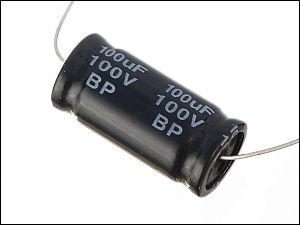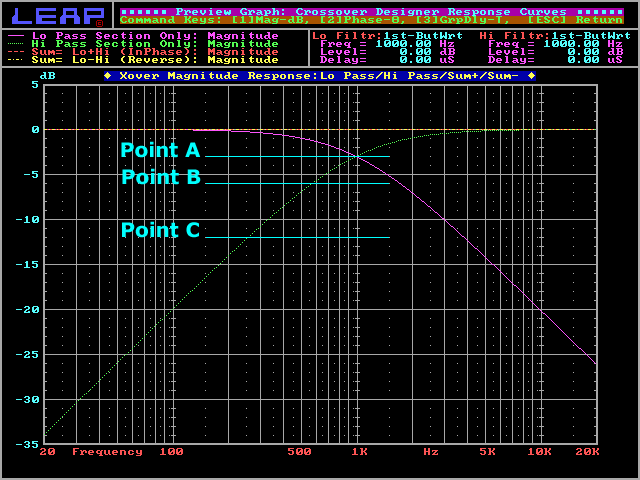 Earlier you were introduced to passive crossovers. The simplest form of high pass crossover is achieved by simply putting a capacitor (like the one at the right) in series with a speaker. The proper capacitor is determined by the desired frequency response and the speaker's rated impedance. This page will cover the basics only. A more in-depth discussion of capacitor selection will be covered on the passive crossover page. Before you can understand everything on that page, you need to read this page and several more (inline in the directory) to be able to handle the more advanced material.
Earlier you were introduced to passive crossovers. The simplest form of high pass crossover is achieved by simply putting a capacitor (like the one at the right) in series with a speaker. The proper capacitor is determined by the desired frequency response and the speaker's rated impedance. This page will cover the basics only. A more in-depth discussion of capacitor selection will be covered on the passive crossover page. Before you can understand everything on that page, you need to read this page and several more (inline in the directory) to be able to handle the more advanced material.As a side note... The term passive (as in passive crossover) and the 'pass' in high/low pass are not related in any way. Passive means that the filtering is done with passive components only (no need for a power supply). The 'pass' in high/low pass means that the high/low frequencies are allowed to pass through the respective crossovers.
For a 6dB/octave high pass crossover you simply connect the capacitor in series with one of the speaker connections (it doesn't matter whether it's the positive or the negative). There should be no positive or negative markings on the capacitor. If there are, you have a polarized capacitor and it will probably fail (which could cause the speaker to fail if the capacitor shorts when it fails). For best results, you should use a non-polarized or bi-polar (same thing) capacitor rated at 100 volts or more.
On the following graph, the green line shows how the signal level drops off (rolls off) as the frequency decreases. You can see the green line is virtually unaffected (there is virtually no decrease in the signal level) above ~2khz. At point A, you can see that the signal is down 3dB at 1khz. The 3dB down point is the crossover frequency (for Butterworth alignments). It represents the point where the power reaching the speaker is 1/2 of what it would be without the crossover. At point B, the signal level is down by 6dB. This represents the 1/4 power point. At point C (250hz), the signal is down by 12dB. This means that the amount of power reaching the speaker at 250hz is 1/16 as much as it would be without the capacitor.

No comments:
Post a Comment